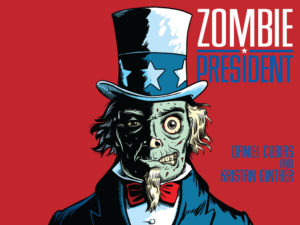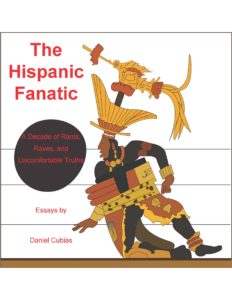He has regaled us with tales of his paratrooper jumps and told us about digging shrapnel out of people and mentioned the tense brushes he’s had with hostile citizens of foreign countries. Of all of the members of my family, he has seen the most of the world – although much of it was through the prism of humanity at its worst.
Cousin #6 came to America as a child. He didn’t become a citizen until his second tour of duty in Iraq. His paperwork was lost twice, and when he reapplied a third time, he was told to report to the county courthouse for the exam.
“But I’m in Iraq,” he said to the civil servant at the other end of the very long-distance phone call. “I can’t make it to the courthouse.”
Strangely enough, Cousin #6 believed that getting shot at in the service of one’s country was adequate proof of his patriotism. But he was initially told that this was insufficient, and it took my mother’s intervention, and the connections she had in local government, for him to receive his citizenship.
A few years ago, Cousin #6 married a fellow soldier. I mean no disrespect to her military background when I say that she is truly adorable. His wife calls him on his newfound cockiness and the swagger that he has developed in adulthood, insisting that one reason she feel for him was his awkward charm.
“When we met, he was such a dork,” she says, and they both laugh.
I remember him as less of a dork and more of a hesitant presence. As a child, he didn’t project the quiet intensity of his brother, Cousin #3, or the charisma of his fellow troublemaker, Cousin #7. Instead, he came across as a boy who wasn’t quite sure of his potential. He had a mischievous steak, to be sure, but he seemed unwilling to call too much attention to himself, and thus avoided serious trouble.
He has caused us sufficient concern, however, in the subsequent years with his overseas postings. While no fan of the men who sent him to Iraq, he remains dedicated to the Army itself. A band of tags around his wrist serves as a memento of his friend who was killed in Iraq. Cousin #6 has no plans to put the item into storage.
After multiple tours of Iraq, he enjoyed a “vacation” in Afghanistan. Although he and his wife recently had a daughter, he is heading back to that godforsaken country as part of the latest surge. We all hope that he returns safely and never has to be shipped to another war zone.
If he does get deployed somewhere else, however, we all know that he will continue to be a great representative of our nation overseas. And of course, he carries our country’s best qualities with him always.










